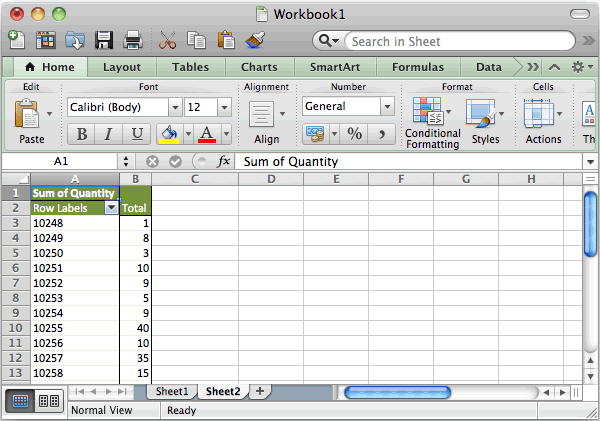

Pivot chart from pivot table in excel for mac 2011 Pc#
So, perhaps this is a better (and more robust) way to address the discrepancy - if I use the "classic" style on PC perhaps shows up without the discrepancy on the Mac. Now, you bring up a good point re: using "classic" style pivot table - I am not using classic style, although that is as much because it was not set by default on my computer. I want to create a formatted table in a way that I want, and again, do not want to live with the limitations of pivot table formatting (but still want to leverage the power of pivots). If I want to create a chart of the data, but do not want to live with the limitations of pivot charts, then I will simply create a mirror view of the same data then create the chart from that data so I can create a "chart," not a pivot chart.

I have done this for one of two different reasons: Yes - the issue shows up when referencing cells within a pivot table from outside the table. I am not sure if this is still an issue for Karthik or others, but this is the work around I intend to use. One caveat with this: I have not yet confirmed it works on the Mac without any adjustment, although will be shortly. If I knew for certain what the value of info("system") returns on a Mac, I would probably invert this to simply use a check against that value rather than a "1 - " logic. If this is going to be used multiple times, it is probably best to do the info check and logical comparison only once, and then use the true/false result to offset by one row or not.Īnd then my reference to the pivot table cells contains: This function will offset by one row in case my operating system is NOT pcdos (i.e., on a Mac). Instead of referencing the cell directly, I now use offset(reference_cell, 1-(info("system")="pcdos",0) as the new reference to the cell. Then I created a reference to the cells I am using in other places. This equals "pcdos" (without the quotes) on my PC, and I have not yet been able to confirm the value on a Mac. use the function info("system") to return the system type. The workaround I have (which some might even characterize as a hack) is to first find out which system I am on (i.e., PC or Mac), and then using an offset of one row in the case where I am on a Mac. I was hoping to find an answer to this issue, but since I did not, I figured I'd find at least a workaround, and post that.Īs Karthik stated, there seems to be an extra row at the top of the pivot table that, when I have other cells referencing data within the pivot, it throws off the referencing to all subsequent data rows. I too have encountered this issue and it is more than an inconvenience to me since I am creating a simple data analysis tool in Windows, but it will be used by users that are on Macs.


 0 kommentar(er)
0 kommentar(er)
